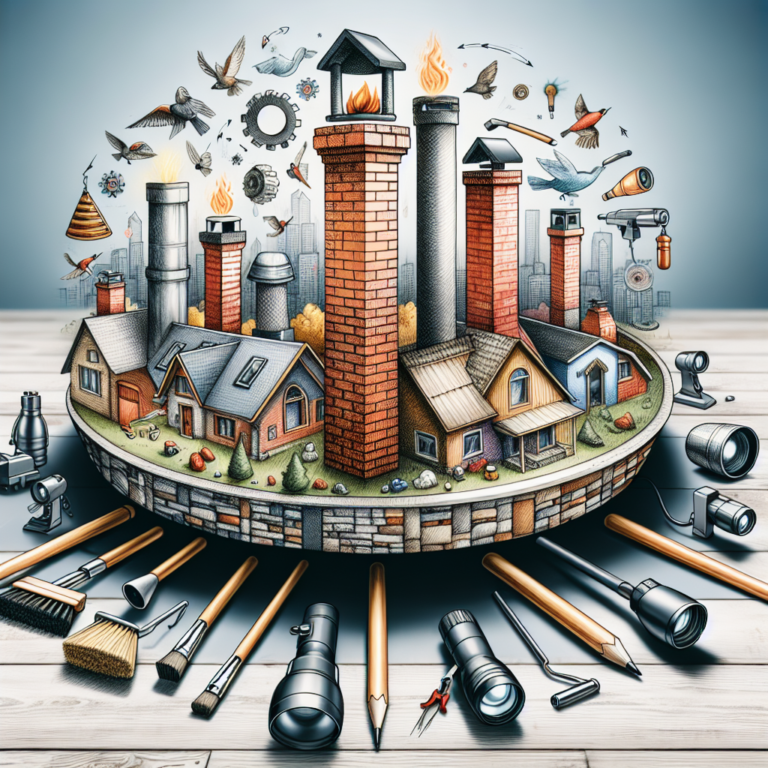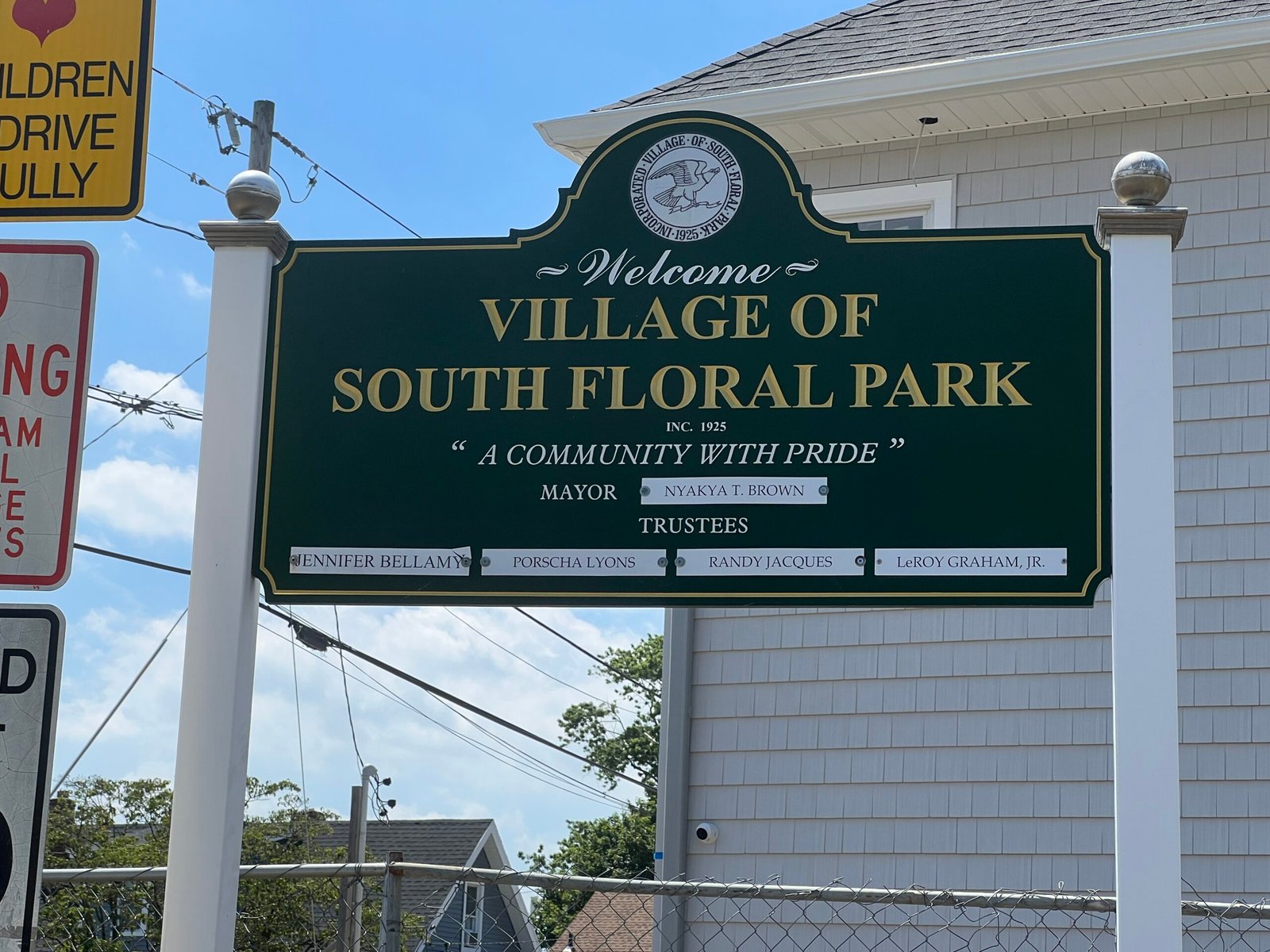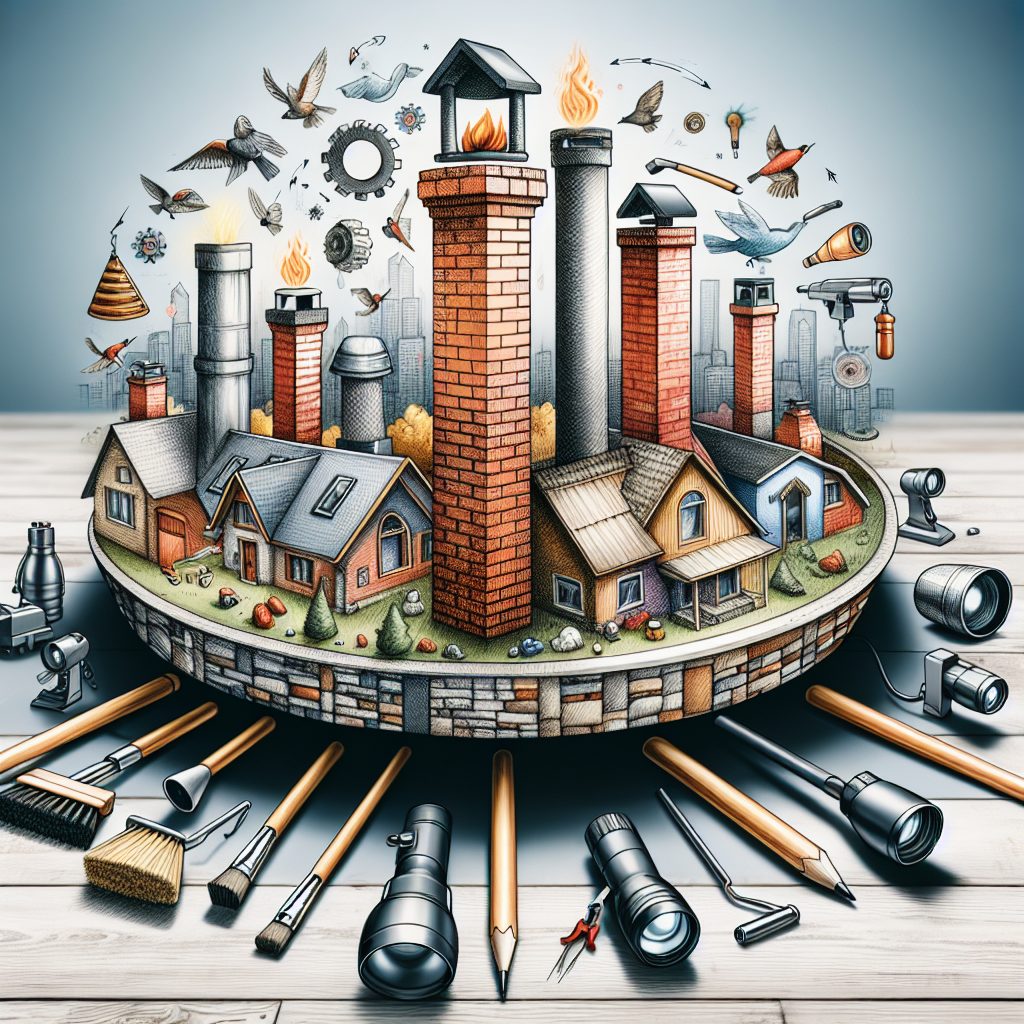-
Table of Contents
Chimney Inspection: Level 1, 2, & 3 Services
When it comes to maintaining the safety and efficiency of your home’s chimney system, understanding the different levels of chimney inspection is crucial. Comprehensive chimney inspections are categorized into three distinct levels—Level 1, Level 2, and Level 3—each designed to address specific needs and conditions. By familiarizing yourself with these levels, you can ensure that your chimney is not only functioning properly but also safe for use.
Level 1 inspections are the most basic and are typically recommended for chimneys that have been well-maintained and are in good condition. This type of inspection involves a visual examination of the readily accessible components of the chimney, including the flue, firebox, and chimney cap. During a Level 1 inspection, a qualified technician will check for any obvious signs of damage, blockages, or deterioration. This inspection is often performed during routine maintenance or when there have been no changes to the chimney system. If everything appears to be in order, the chimney can continue to be used safely. However, if any issues are identified, further inspection may be warranted.
Transitioning to Level 2 inspections, these are more comprehensive and are typically required when there has been a change in the chimney system, such as a new appliance installation, a change in fuel type, or after a significant weather event. A Level 2 inspection includes everything covered in Level 1 but goes further by examining the interior of the flue and the exterior of the chimney structure. This may involve the use of specialized tools, such as video cameras, to assess areas that are not easily visible. The technician will look for signs of creosote buildup, structural damage, or any other issues that could affect the chimney’s performance. This level of inspection is essential for ensuring that any potential hazards are identified and addressed before they lead to more serious problems.
Finally, Level 3 inspections are the most invasive and are typically reserved for situations where serious issues have been identified during a Level 2 inspection or when there is a suspected problem that cannot be diagnosed through visual means alone. This level may involve removing parts of the chimney structure, such as the crown or the flue liner, to gain access to hidden areas. The goal of a Level 3 inspection is to provide a thorough assessment of the chimney system, ensuring that any underlying issues are uncovered and rectified. While this level of inspection can be more disruptive and costly, it is often necessary to ensure the long-term safety and functionality of the chimney.
In conclusion, understanding the differences between Level 1, Level 2, and Level 3 chimney inspections is essential for homeowners who want to maintain a safe and efficient chimney system. Regular inspections can help identify potential issues before they escalate into costly repairs or dangerous situations. By working with qualified professionals who can perform these inspections, homeowners can ensure that their chimneys remain in optimal condition, providing peace of mind and safety for their families. Whether you are scheduling a routine maintenance check or addressing specific concerns, knowing which level of inspection is appropriate will help you make informed decisions about your chimney care.
The Importance of Chimney Cap Replacement for Home Safety
Chimney caps play a crucial role in maintaining the safety and efficiency of a home’s chimney system. Often overlooked, these protective coverings serve as the first line of defense against various environmental elements, including rain, snow, and debris. When a chimney cap is damaged or missing, it can lead to a host of problems that not only compromise the chimney’s functionality but also pose significant safety risks to the home and its occupants. Therefore, understanding the importance of chimney cap replacement is essential for homeowners who prioritize safety and maintenance.
To begin with, a well-functioning chimney cap prevents water from entering the chimney flue. Water intrusion can lead to serious issues such as rusting of metal components, deterioration of masonry, and the growth of mold and mildew. These problems not only affect the structural integrity of the chimney but can also lead to costly repairs if left unaddressed. Moreover, moisture can create an environment conducive to the development of creosote, a highly flammable substance that accumulates in the flue. This accumulation increases the risk of chimney fires, which can have devastating consequences for both property and personal safety.
In addition to protecting against water damage, chimney caps also serve to keep animals and debris out of the chimney. Birds, squirrels, and other wildlife often seek shelter in chimneys, which can lead to blockages that impede airflow. Such blockages can cause smoke to back up into the home, creating hazardous conditions for the occupants. Furthermore, fallen leaves, twigs, and other debris can accumulate in the chimney, leading to clogs that may result in dangerous chimney fires. By replacing a worn or missing chimney cap, homeowners can effectively mitigate these risks and ensure that their chimney remains clear and functional.
Another important aspect of chimney caps is their role in promoting proper ventilation. A well-designed chimney cap allows for the efficient escape of smoke and gases while preventing downdrafts that can bring smoke back into the living space. When a chimney cap is damaged or improperly installed, it can disrupt this balance, leading to poor ventilation and increased indoor air pollution. This not only affects the comfort of the home but can also pose health risks to the occupants. Therefore, regular inspection and timely replacement of chimney caps are essential for maintaining optimal air quality and ensuring a safe living environment.
Moreover, chimney caps come in various materials and designs, allowing homeowners to choose options that best suit their aesthetic preferences and functional needs. Stainless steel, copper, and galvanized steel are popular choices, each offering unique benefits in terms of durability and resistance to corrosion. By investing in a high-quality chimney cap, homeowners can enhance the longevity of their chimney system while also adding an attractive element to their home’s exterior.
In conclusion, the importance of chimney cap replacement cannot be overstated. By safeguarding against water damage, preventing animal intrusions, promoting proper ventilation, and enhancing the overall aesthetic appeal of the home, a well-maintained chimney cap is essential for ensuring the safety and efficiency of a chimney system. Homeowners should prioritize regular inspections and timely replacements to protect their investment and maintain a safe living environment. Ultimately, a proactive approach to chimney maintenance not only enhances safety but also contributes to the overall well-being of the home and its occupants.
Q&A
1. **What is a Level 1 Comprehensive Chimney Inspection?**
A Level 1 inspection involves a visual examination of the chimney and its components, ensuring they are free of obstructions and in good condition, typically performed when there are no changes to the system.
2. **What does a Level 2 Comprehensive Chimney Inspection include?**
A Level 2 inspection includes all aspects of a Level 1 inspection, plus an evaluation of the chimney’s interior and exterior, often using video scanning, and is required when there are changes to the system or after an event like a chimney fire.
3. **What is involved in a Level 3 Comprehensive Chimney Inspection?**
A Level 3 inspection is the most thorough, involving the removal of components (such as the chimney crown or flue liner) to access hidden areas for a detailed examination, typically required when serious issues are suspected or when a Level 2 inspection reveals significant concerns.













